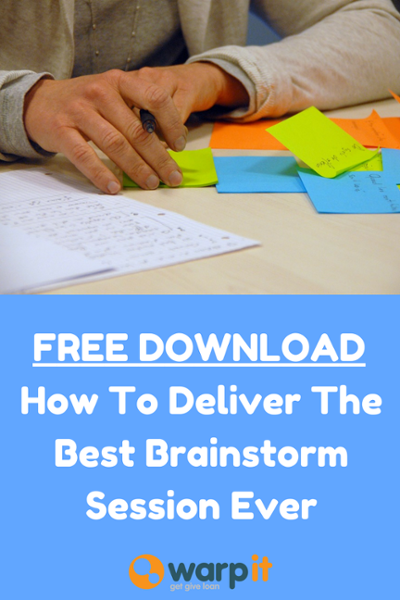It's time to talk about making plans, being well prepared and knowing what you want to achieve during the day, week, month or year.
Daniel O'Connor, Warp It's founder, is a master of productivity. He knows how to avoid distractions and always works towards a clear vision. Many of Daniel’s tactics and techniques have been borrowed from various sources and shared through the articles on our blog section and are especially invaluable to those looking to increase productivity.
About starting the day right
“I always say to myself, I should never be even turning my computer screen on before I’ve got a plan of what to do. Without a plan, you get so easily distracted. If you get distracted, you don’t get started. You need to have a plan. We’ve already talked about having a vision in other articles, but how do you develop a plan to move towards that vision?”
See the download at the bottom of this article for a great plan!
About building your plan
“Luckily, if you’re developing a reuse programme, we’ve already developed a Gantt chart that you can download, which is a plan of how to deliver reuse in an organisation. If you’re starting from scratch and you want to get buy-in from the team you’ve assembled, a good way to start to develop a plan is just to have a huge brainstorm right at the start. Think about the vision you want to achieve. Think about the success you want to bring. Once you’ve visualised that success, take backward steps. For each backward step, ask yourself “How do we get here?’. Break it down and explore all the angles and avenues. Do you have the tools to make this work?
-121130-edited.jpg?width=608&name=tools%20(1)-121130-edited.jpg)
About working with your team to create order
“A good way to build a plan is by using sticky notes. Get your team together and ask them to shout out the things that they believe need to get done. This takes around 20 minutes, and then you can put those sticky notes into chronological order. What you’ll notice is that some of the sticky notes are milestones, some are tasks and some are sub-tasks. Get them into order and you’ll realise that by doing one thing, you’ll automatically tick of several more. Tim Ferriss calls those ‘multiplier tasks’. They multiply your effort if you get them done.”
About project management
“Using your sticky notes you can start to map out the tasks that need to be done. You might want to put this in a spreadsheet, or a word document. We use something called Asana for project management. It’s brilliant for mapping out your main milestones into an action plan and then breaking those milestones down into activities. Those activities need a deadline, and an owner who is responsible for finishing them. The thing with deadlines is if you put it too far into the future, it won’t get done, because you’ll think “I’ve got plenty of time. I’m not going to do that yet”.
If you are in the planning stage for a reuse programe, grab this download now ⬇️.
About creating little steps in the near future.
“You need to take all those little milestones and give them little deadlines and stick to the deadlines so that the massive job you want to do, or the vision you want to create, is broken down into dozens or even hundreds of little steps. For a reuse programme, it’s 28 steps. Set a deadline against each of those steps. Over time, you’re going to achieve them little by little. You know what else I do as well? Every time I achieve a milestone, I celebrate it. You’ve got to celebrate your mini-wins. We’ve discussed this in other blogs.”










